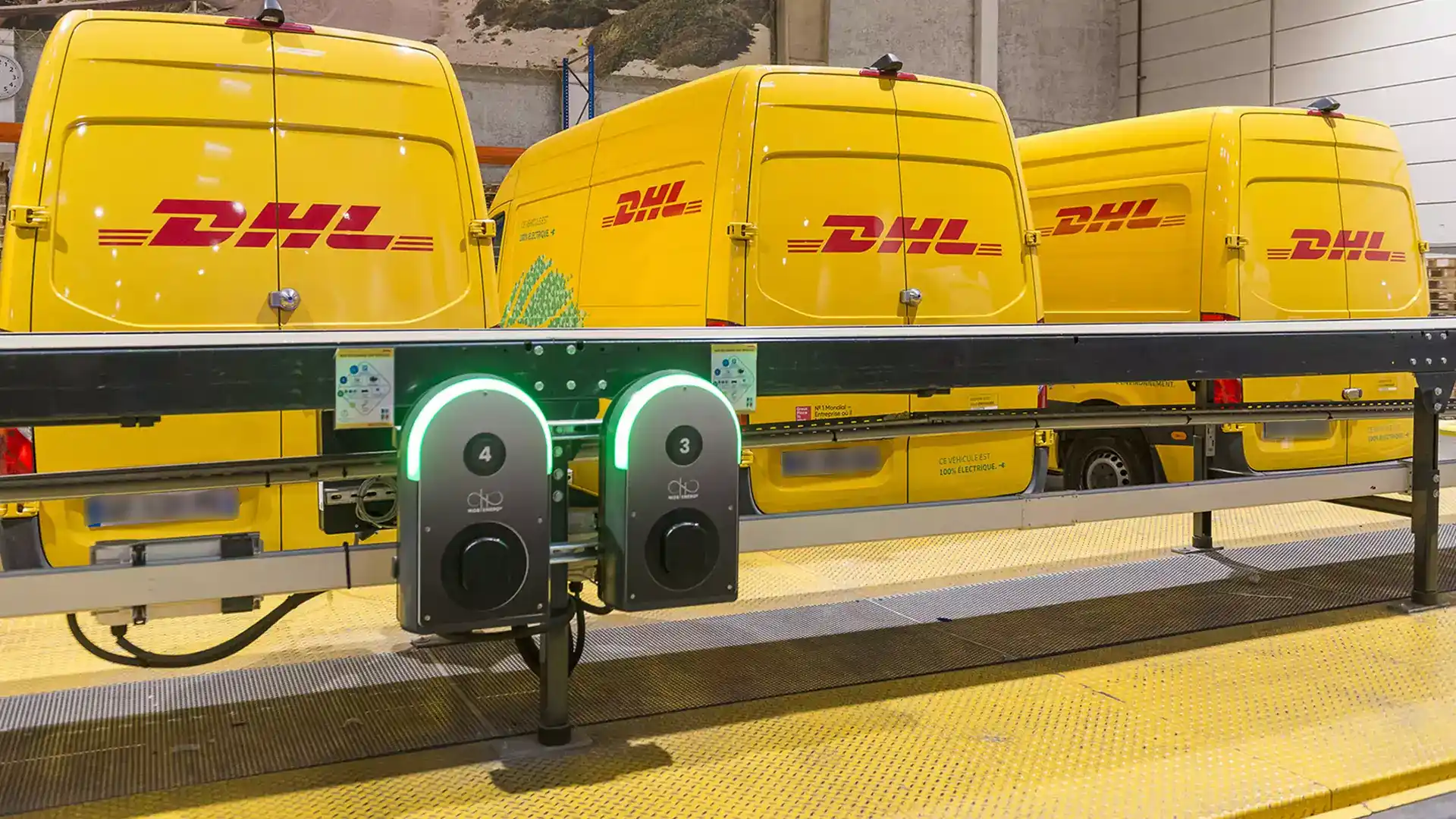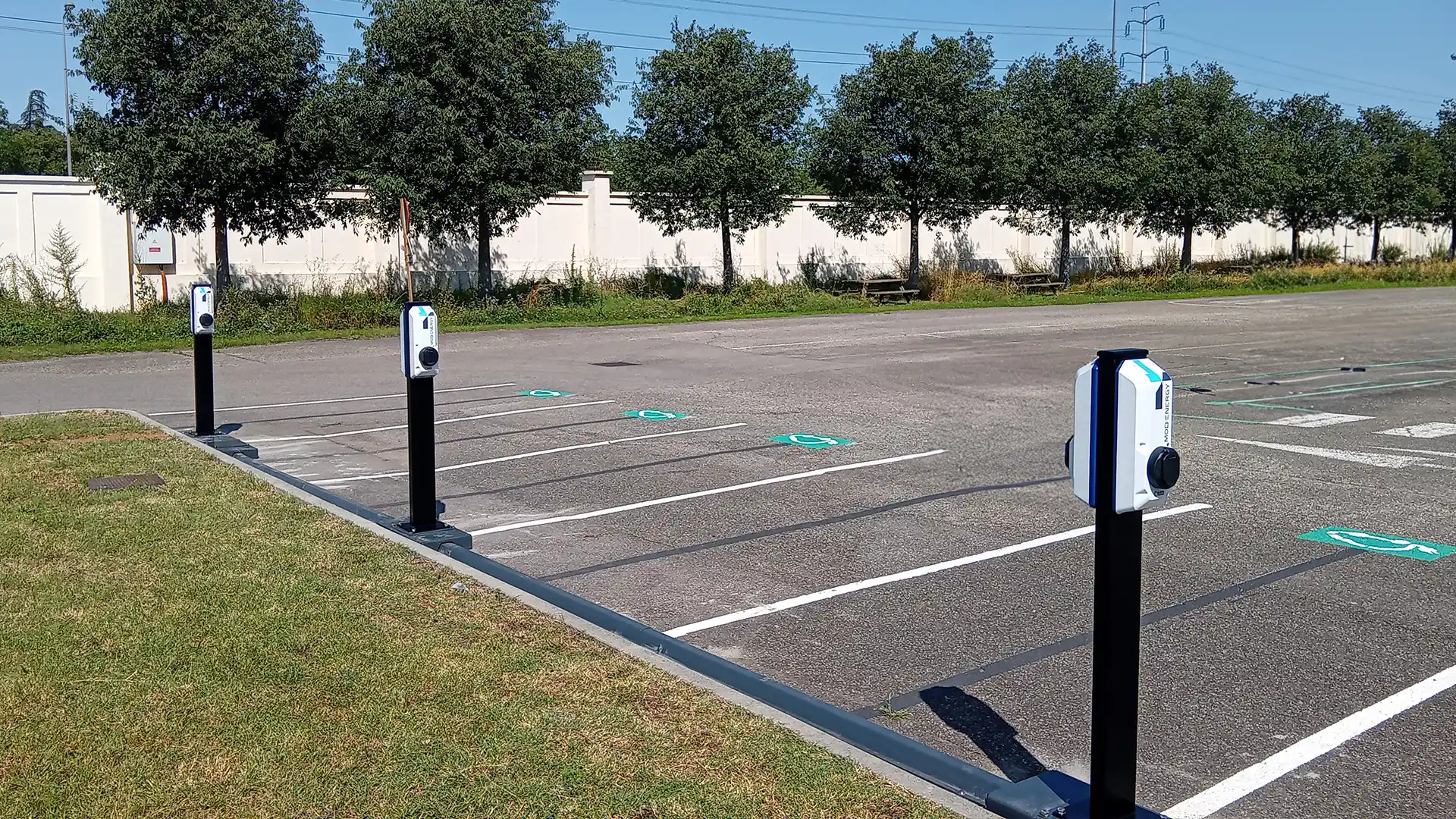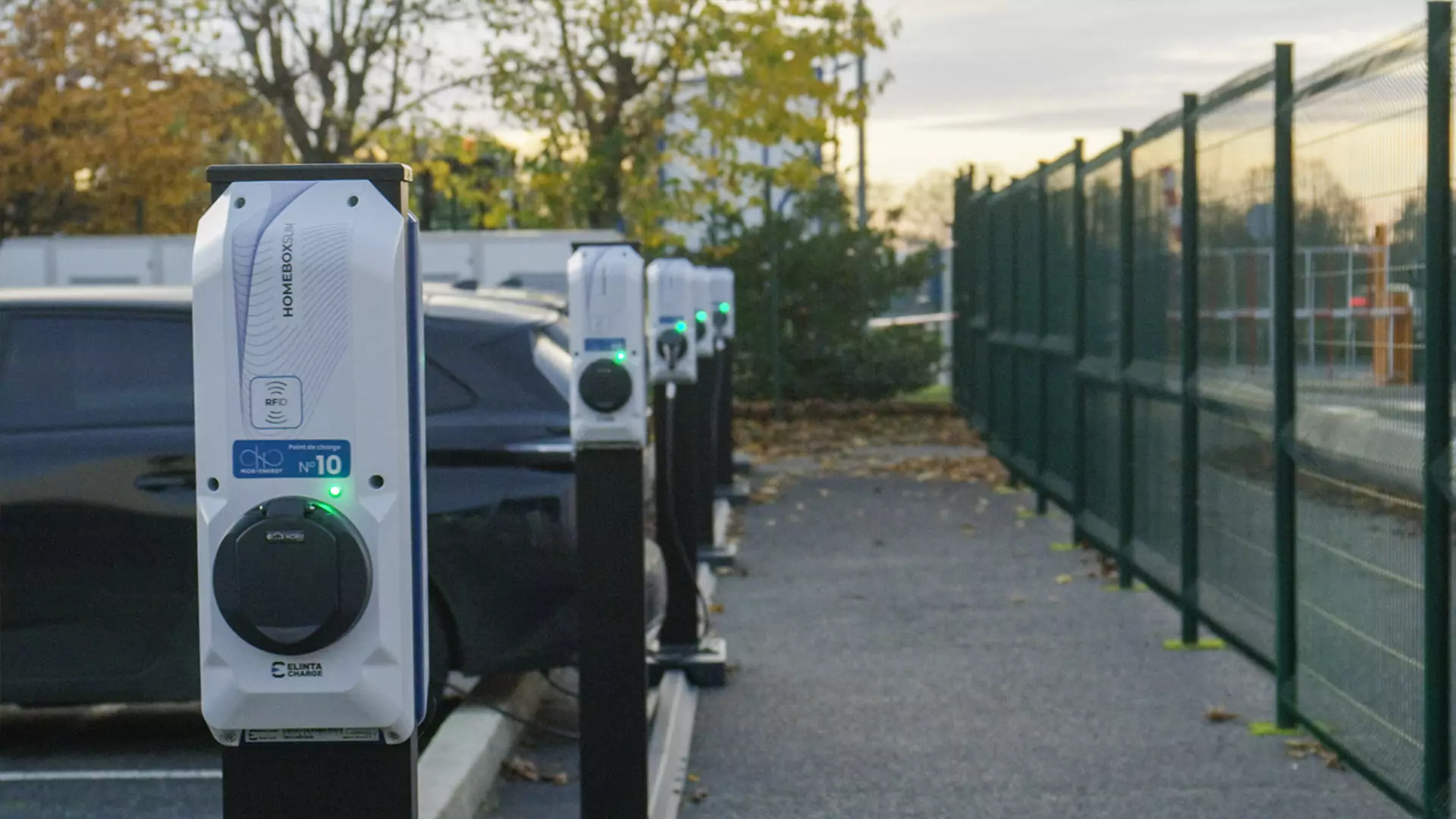Groupe Bernard: meeting the different recharging needs of a dealership
The automotive distribution sector has been undergoing a number of far-reaching changes over the last few years, including the concentration of investors, the impact of digital technology on the customer experience and the development of multi-branding, i.e. the grouping together of several brands in a single dealership. The transition to electric vehicles is one of these changes, in which car dealers are playing an active role, but which also raises a number of challenges for them, not least that of recharging.
To meet this challenge at its Peugeot Citroën DS dealership in Bourg-en-Bresse, Groupe Bernard, one of France’s leading car distribution groups, chose the Eiko power cube. Read what those involved in the project have to say.
The Bernard Group: a major player in automobile distribution with an ambitious CSR strategy
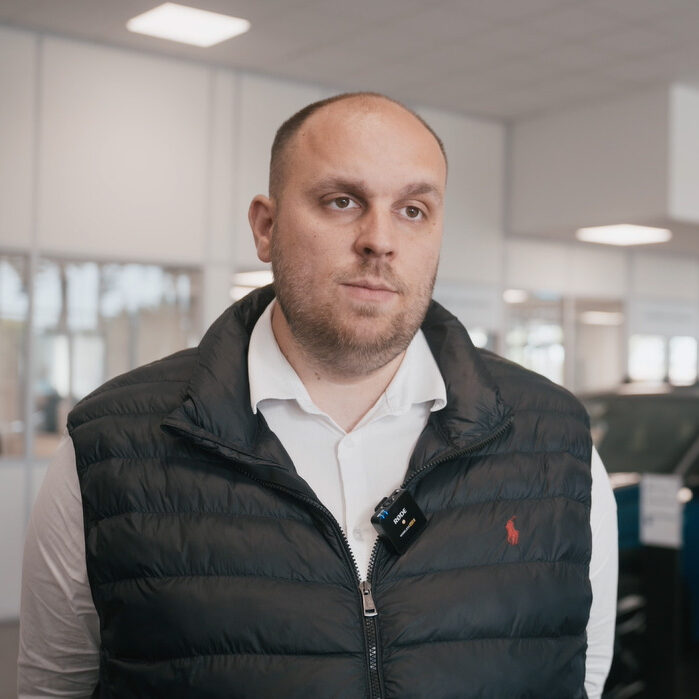
The Bernard Group is one of France’s leading car and HGV distributors. We have 3,100 employees, 128 branches and, in 2023, sold more than 70,000 new and used vehicles.
Damien Bret, Manager of the Peugeot Citroën DS dealership in Bourg-en-Bresse
As part of its CSR strategy, the automotive distribution group has set itself the target of achieving carbon neutrality by 2050, and is developing a number of initiatives to achieve this. For example, the century-old company is carrying out energy-efficiency upgrades when it renovates its sites or brings brands together under one roof.
This is specifically the case at the Bourg-en-Bresse dealership, a historic Peugeot site, where work has just been completed after a year of renovations and the integration of 3 new brands.
Every year, the Bernard Group undertakes a number of projects as part of its CSR strategy, particularly in the social and environmental fields, with the installation of solar panels and energy modernisation work on glazing, insulation and BMS systems. The Bourg-en-Bresse dealership embarked on a complete renovation almost a year ago, as it is a historic Peugeot site in the town of Bourg-en-Bresse. Today, we have integrated the Citroën DS and MG brands. We’ve just completed our work on integrating the brands in the different halls, in line with the requirements of each manufacturer, and we’ve also been able to benefit from an energy upgrade to make the dealership as energy-efficient as possible.
Damien Bret, Manager of the Peugeot Citroën DS dealership in Bourg-en-Bresse
Car dealership recharging: different needs coexist
Market trends show a growing adoption of electric vehicles. In 2023, registrations of these vehicles accounted for 26.5% of the market in France and over 21% in Europe, representing growth of 18% compared with 2022. The European Union is aiming to ban the sale of combustion-powered vehicles by 2035, placing car dealerships at the heart of this transition.
Not only are dealers responsible for selling these new vehicles, they must also be able to guarantee that the vehicles for sale can be recharged, as well as offering a recharging service to passing customers. The complexity for a car dealership is therefore to have a recharging service adapted to its different needs, between test vehicles, used vehicles, rental vehicles or those of customers and visitors.
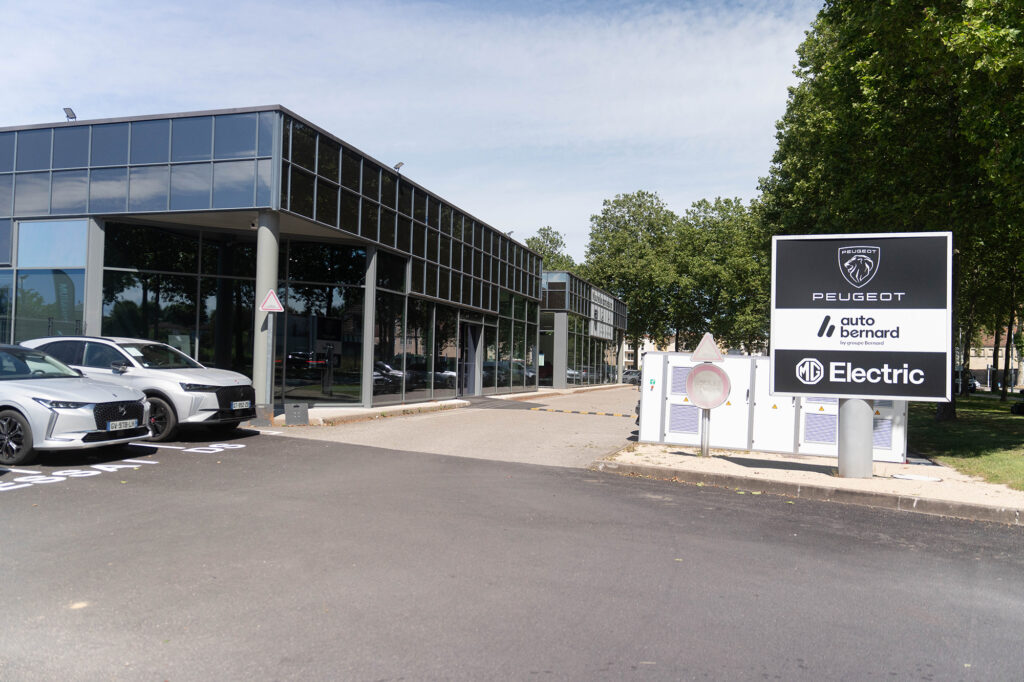

Within a dealership, we have several recharging requirements for the test fleet, the used vehicle fleet and the customer fleet. The need is for slow recharging, and therefore low-power charging points. The final need is in the workshop for vehicles undergoing repairs, where the requirement is for faster recharging. The challenges in the automotive sector and within dealerships are generally similar in terms of constraints, but also in terms of needs.
Jérémy Robert, Energy Transition Officer, Bernard Group
Car dealerships therefore have a wide range of recharging needs, most of which can be met by low-power AC charging points. Test vehicles and used cars are parked for long periods of time, and require daily feeding rather than rapid recharging sessions.
However, covering these varied needs requires multiple charging points on site, and projects often come up against the technical limits of the building, or more specifically, those of the existing electrical infrastructure.
Installing charging points in a car dealership: the question of power and the work involved
The main challenge on this project was to complete the work in a relatively short timeframe, but also to provide the power needed to supply the bollards with energy. This additional power requirement would have meant increasing our tariff, or adding a yellow tariff to the concession, which would have meant additional delays and costs.
Jérémy Robert, Energy Transition Officer, Bernard Group
The main challenge when installing charging stations in a car dealership is the lack of electrical power in the building. This usually requires extensive electrical engineering, including the installation of a new delivery point to draw or inject electricity.
The financial aspect also often comes into play: with the installation of new charge points and the amount of power required to be delivered, car dealerships have to take out a new subscription at a higher rate. These steps lengthen the lead times and increase the costs of the charging point installation project.
In addition, charging points are needed in different parts of the car dealership, especially in the case of a multi-brand site. The needs of car dealerships are varied (test, used, customer or visitor vehicles) and require several charging points, with at least one dedicated point for each use.
This situation usually results in major earthworks to install the ducts and run the power cables linking the main LV board to the terminals.
Nevertheless, innovative solutions do exist to meet the challenges faced by car dealerships in terms of recharging and energy consumption. This is the choice made by the Bourg-en-Bresse dealership, which installed the Eiko cube and 24 charging points, without any earthworks or increase in power.
24 charging points for the Bourg-en-Bresse concession
By choosing Eiko for its Bourg-en-Bresse dealership, the Bernard group has been able to deploy 24 charging points at different locations in its car park, considerably reducing the amount of work and power required.
The project within the dealership was to install 24 charge points. To meet this need, and to deal with the lack of power within the dealership, we decided to install the Eiko cube. This cube, which stores 100 kWh of energy, is connected to the concession’s 40-ampere main LV board, which meant we didn’t have to add a new tariff and a PDL to the concession.
Jérémy Robert, Energy Transition Officer, Bernard Group
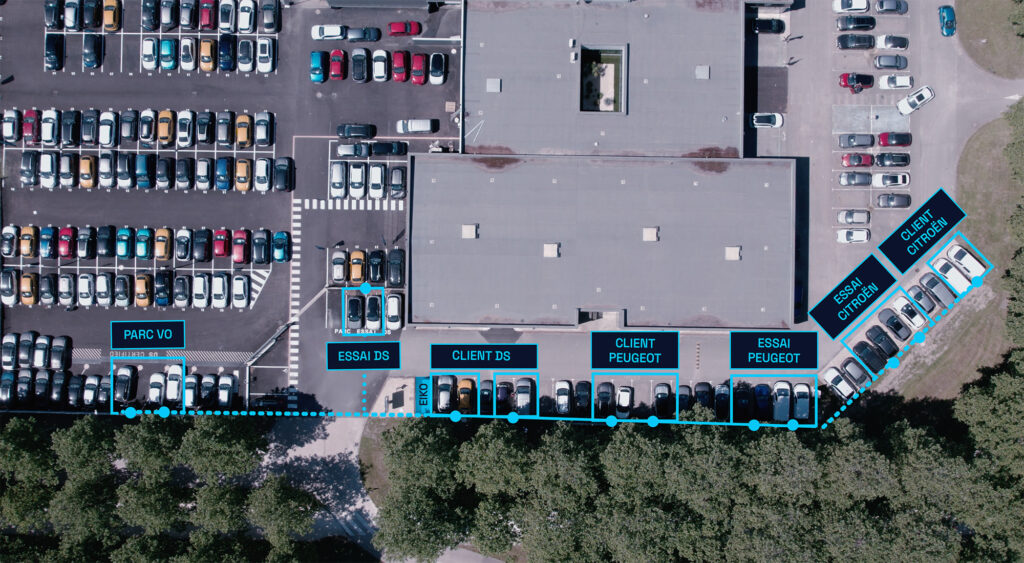
The Eiko cube is connected to the electricity grid with a single cable, at a power of 27kW. This single power supply recharges the 100kWh storage batteries overnight. During the day, Eiko distributes this energy to the charging points by boosting the output power.
What’s more, the solution is installed above ground, without any earthworks, thanks to the Eikolink interconnection system. This modular, non-intrusive solution meant that the 24 charge points could be deployed quickly, at the desired locations, without the need for major external works.
Eiko: an innovative, scalable solution
We also chose Eiko because of its innovative nature, namely the use of second-life batteries from the automotive industry. Another advantage of the cube is that it can be upgraded over time: if we start with 10 charging points in a dealership, we can expand to around twenty.
Jérémy Robert, Energy Transition Officer, Bernard Group
Thanks to its interconnection system between the charging points and its above-ground installation, the number of charging points can be increased in just a few days, without any work or additional power. This offers unprecedented flexibility and speed of deployment to meet the growing recharging needs of car dealerships.
We are only at the beginning of the electrification of the car fleet. Recharging needs will grow automatically in the years to come, necessitating the installation of new charging points.
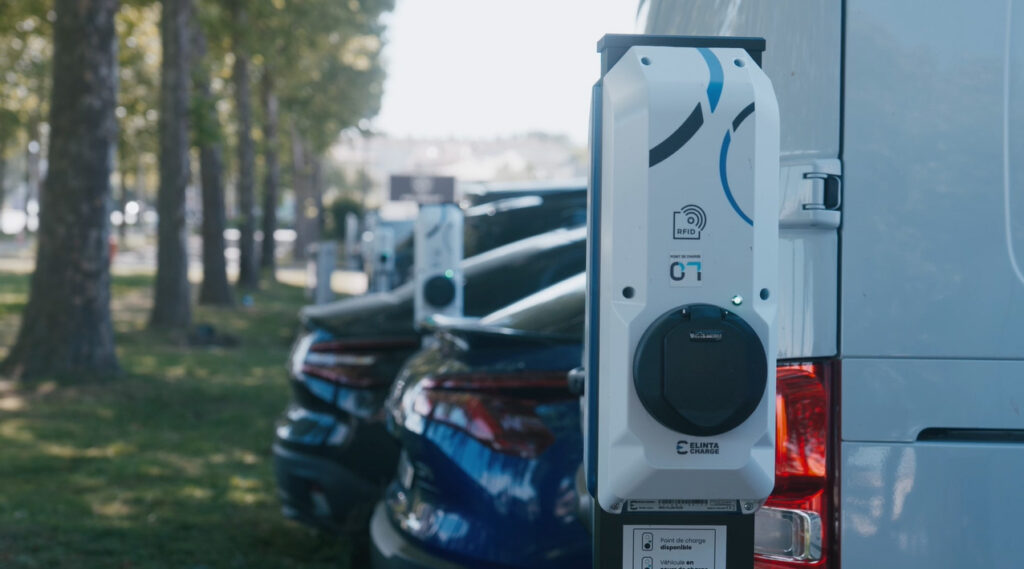
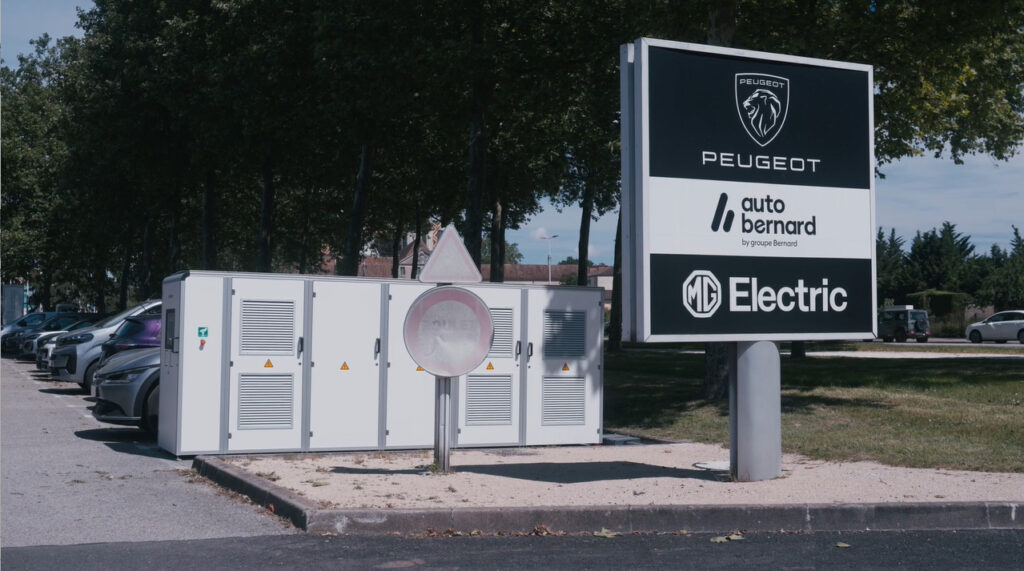
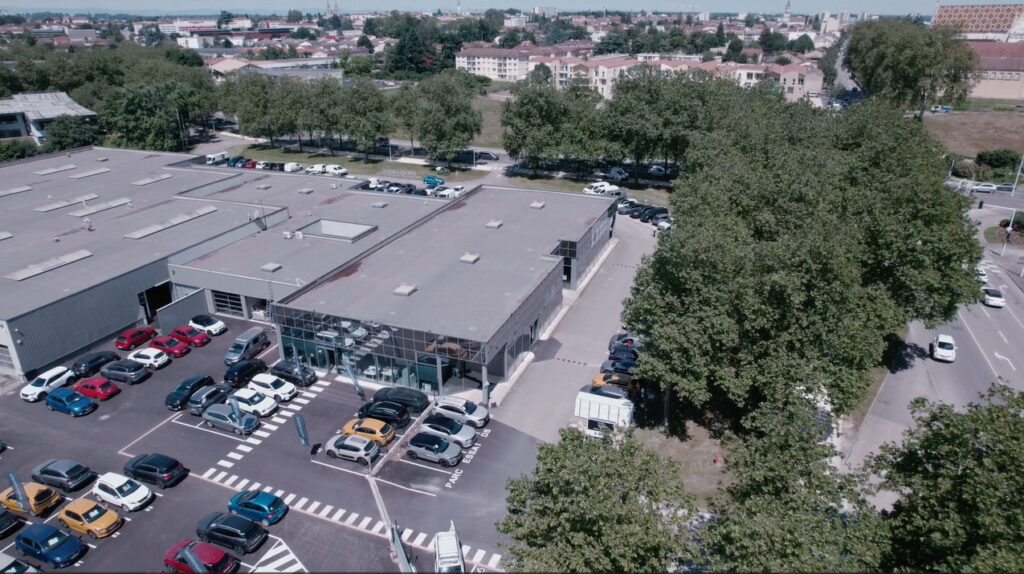
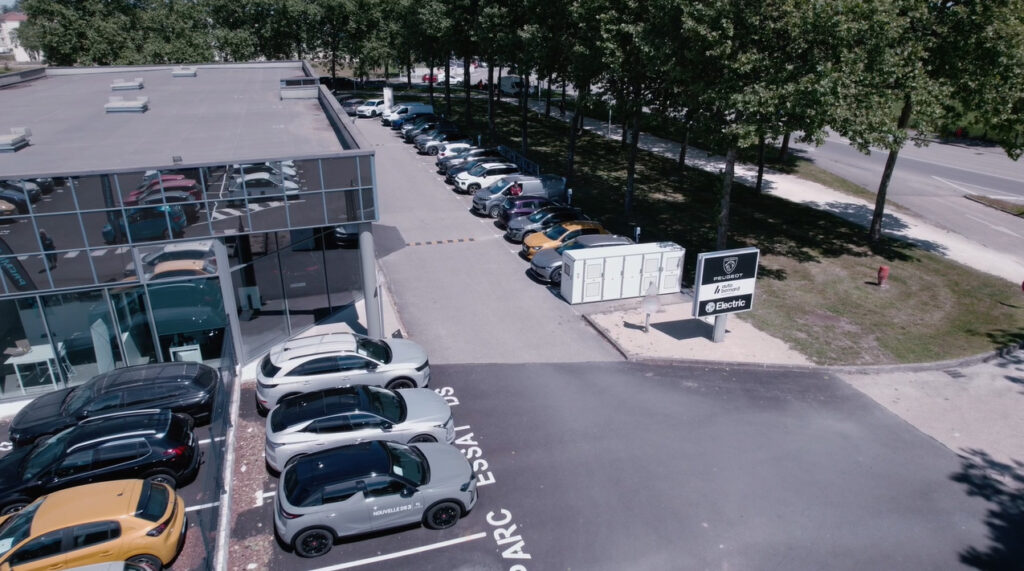
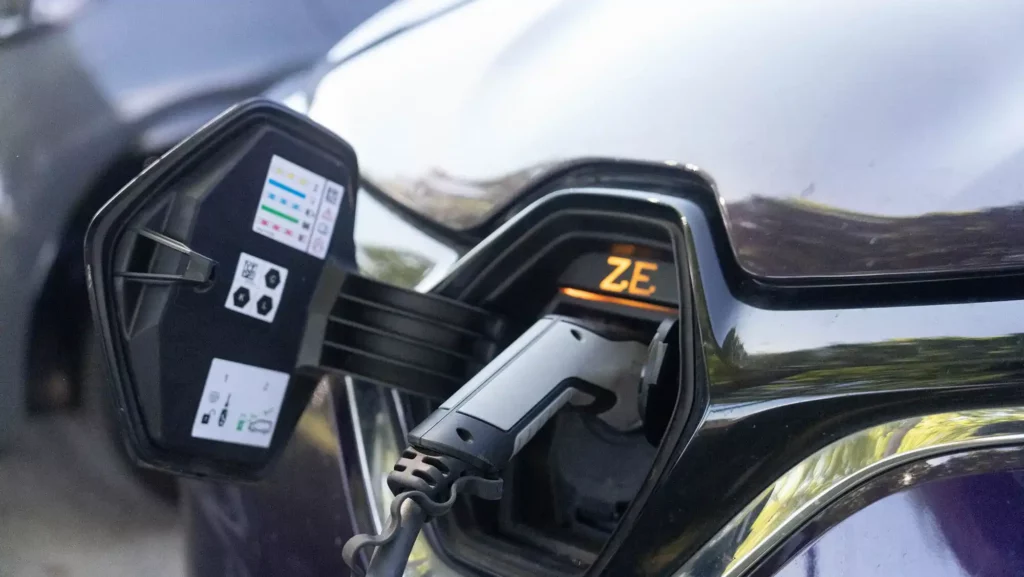
Your project
Every parking lot is different.
Every customer has his or her own recharging needs.
That’s why our solutions are modular and scalable, so that your recharging infrastructure is perfectly suited to your needs at all times.






